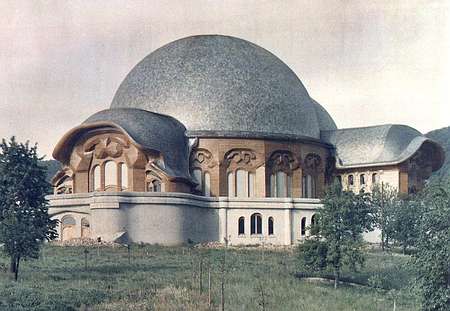

Rudolf Joseph Lorenz Steiner (25/27 February 1861– 30 March 1925) was an Austrian philosopher, social reformer, architect, and esotericist.
Steiner gained initial recognition as a literary critic and cultural philosopher. At the beginning of the twentieth century, he founded a spiritual movement, anthroposophy, as an esoteric philosophy with roots in German idealist philosophy and theosophy; other influences include Goethean science and Rosicrucianism.
In the first, more philosophically oriented phase of this movement, Steiner attempted to find a synthesis between science and spirituality; his philosophical work of these years, which he termed spiritual science, sought to provide a connection between the cognitive path of Western philosophy and the inner and spiritual needs of the human being. He emphasized clarity of thinking in his spiritual work, differentiating his approach from what he considered to be vaguer approaches to mysticism. In a second phase, beginning around 1907, he began working collaboratively in a variety of artistic media, including drama, the movement arts (developing a new artistic form, eurythmy) and architecture, culminating in the building of the Goetheanum, a cultural centre to house all the arts. In the third phase of his work, beginning after World War I, Steiner worked to establish various practical endeavors, including Waldorf education, biodynamic agriculture, and anthroposophical medicine.
Steiner advocated a form of ethical individualism, to which he later brought a more explicitly spiritual component. He based his epistemology on Johann Wolfgang Goethe's world view, in which “Thinking … is no more and no less an organ of perception than the eye or ear. Just as the eye perceives colours and the ear sounds, so thinking perceives ideas.". A consistent thread that runs from his earliest philosophical phase through his later spiritual orientation is the goal of demonstrating that there are no essential limits to human knowledge.
From Wikipedia, the free encyclopedia
Link: http://en.wikipedia.org/wiki/Rudolf_Steiner
General
- Rudolf Steiner Overview
- The Anthroposophical Society in America
- The Goetheanum
- Rudolf Steiner Archiv in German
- Emerson College UK
- Writings
- The Rudolf Steiner Online Archive with English translations of many of Steiner's works
- Steiner lending library
- Rudolf Steiner Audio
- A list of all known English translations
- Rudolf Steiner Handbook (PDF, 60 MB)
